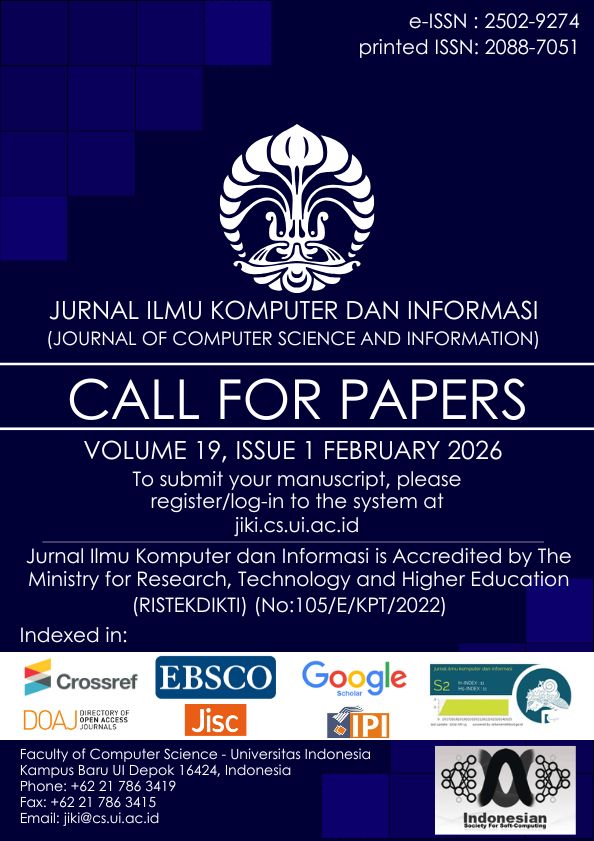Improved mask RCNN and cosine similarity using RGBD segmentation for Occlusion handling in Multi Object Tracking
DOI:
https://doi.org/10.21609/jiki.v16i1.1073Abstract
In this study, additional depth images were used to enrich the information in each image pixel. Segmentation, by its nature capable to process image up to pixel level. So, it can detect up to the smallest part of the object, even when it’s overlapped with another object. By using segmentation, the main goal is to be able to maintain the tracking process longer when the object starts to be occluded until it is severely occluded right before it is completely disappeared. Object tracking based on object detection was developed by modifying the Mask R-CNN architecture to process RGBD images. The detection results feature extracted using HOG, and each of them got compared to the target objects. The comparison was using cosine similarity calculation, and the maximum value of the detected object would update the target object for the next frame. The evaluation of the model was using mAP calculation. Mask R-CNN RGBD late fusion had a higher value by 5% than Mask R-CNN RGB. It was 68,234% and 63,668%, respectively. Meanwhile, the tracking evaluation uses the traditional method of calculating the id switching during the tracking process. Out of 295 frames, the original Mask R-CNN method had ten switching ID times. On the other hand, the proposed method Mask R-CNN RGBD had much better tracking results with switching ids close to 0.
Keywords—Occlusion, RGBD, Mask R-CNN, Late fusion, Cosine similarity
Downloads
Published
How to Cite
Issue
Section
License
Authors who publish with this journal agree to the following terms:
- Authors retain copyright and grant the journal right of first publication with the work simultaneously licensed under a Creative Commons Attribution License that allows others to share the work with an acknowledgement of the work's authorship and initial publication in this journal.
- Authors are able to enter into separate, additional contractual arrangements for the non-exclusive distribution of the journal's published version of the work (e.g., post it to an institutional repository or publish it in a book), with an acknowledgement of its initial publication in this journal.
- Authors are permitted and encouraged to post their work online (e.g., in institutional repositories or on their website) prior to and during the submission process, as it can lead to productive exchanges, as well as earlier and greater citation of published work (See The Effect of Open Access).










